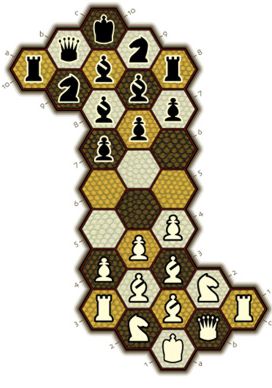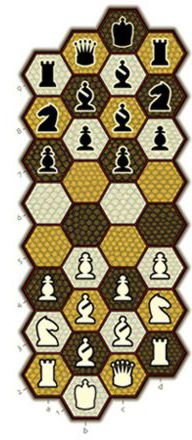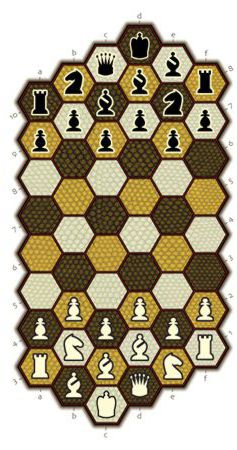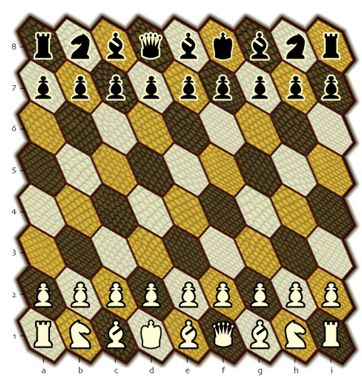Four Chess Games—Compare Features
| Hexes Chess games |
number of hexes |
pieces per player |
game density |
degrees of freedom |
opening moves |
full size or compressed |
|
|---|---|---|---|---|---|---|---|
 3-Pawn |
30 | 12 | 80% | 330 | 13 | compressed | |
 4-Pawn |
34 | 13 | 76% | 430 | 15 | compressed | |
 6-Pawn |
54 | 15 | 55% | 838 | 31 | full size | |
 9-Pawn |
72 | 18 | 50% | 1162 | 55 | full size | |
| square chess shown below for comparison | |||||||
 square chess |
64 squares | 16 | 50% | 756 | 20 | full size | |
Number of Hexes
This number indicates how many hexagons (or squares) comprise the chess board.
Pieces per Player
This number indicates how many pieces each player starts with. All Hexes Chess games accommodate 1 king, 1 queen, 2 rooks, 2 knights, 3 bishops, and either 3, 4, 6 or 9 pawns per player, depending on which chess board you use. There are three bishops because hexagonal chess boards are in three colors, and each bishop is constrained to traveling on a single color.
Game Density
This number is the percentage of hexes (or squares) occupied by chess pieces at the beginning of the game. For example, in square chess, and in Hexes Chess 9-pawn, half of the "spaces" are occupied by chess pieces, so their game density is 50%.
Degrees of Freedom*
This metric was created by the designer to calculate an overall score for any chess board that uses standard chess pieces. The number is calculated by counting every direction a king can move, plus every destination a knight can reach from every hex (or square) on the chess board. For example, in square chess, a square near the center of the board has eight directions that a king can move plus eight destinations a knight can reach. These added together give sixteen degrees of freedom for that square. A square at the edge of the chess board has fewer degrees of freedom, and a corner square has the fewest. The degrees of freedom of all the squares added together give a total of 756 degrees of freedom for square chess. On the Hexes Chess 9-Pawn board, a hex near the center of the chess board would have twenty four degrees of freedom—twelve directions a king can move, plus twelve destinations a knight can reach. The Hexes Chess 9-Pawn board has 1162 degrees of freedom. The higher the degrees of freedom, the more options per move a player will generally have.
Opening Moves
This is the number of choices available to a player on the first move of the game.
Full Size or Compressed
Full size Hexes Chess games accommodate two-hex opening moves for pawns. The compressed chess games are simpler and tighter. Hexes Chess has two full-size games—the 6-Pawn and the 9-Pawn, and two compressed games—the 3-Pawn, the 4-Pawn.
*The term "degrees of freedom" as it pertains to chess has elsewhere been defined as the number of optional chess moves a player has when it is their turn to play. It is here calculated and defined as a measure of the whole chess game.